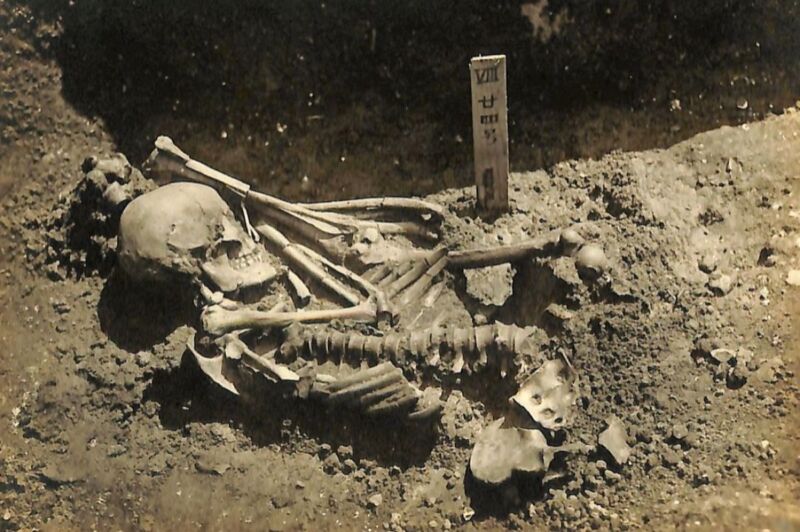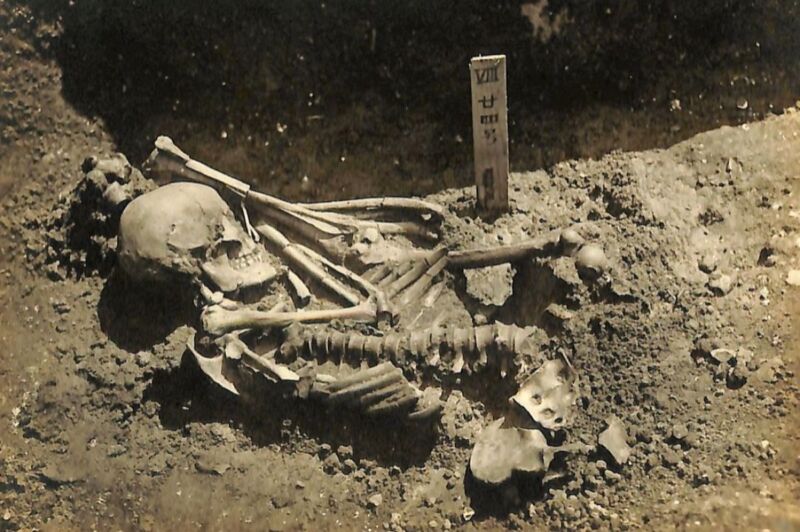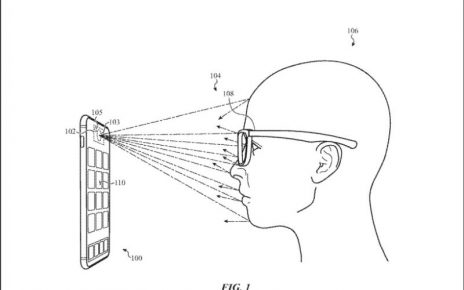
Enlarge / Original excavation photograph of Tsukumo No. 24, a young adult male with evidence of severe trauma consistent with an attack by a white or tiger shark. (credit: Kyoto University)
Marine biologists have spent decades counteracting the popular misconception of sharks as aggressive predators that target humans, particularly in the wake of the blockbuster Jaws franchise. But fatal attacks nonetheless do happen—and they happened even in prehistoric times. While examining the skeletal remains of a prehistoric hunter-gatherer cemetery in Japan dating back some 3,000 years, University of Oxford archaeologists found distinctive evidence that one such skeleton had been the victim of a fatal shark attack. They described their findings in a new paper published in the Journal of Archaeological Science: Reports. It’s the oldest known victim of a shark attack yet—like a prehistoric cold-case film.
The Tsukumo burial site in Japan’s Okayama Prefecture was discovered by construction workers in the 1860s and first excavated in 1915. More than 170 human skeletons were unearthed and housed at Kyoto University. The site dates to the Late-Final Jōmon period of the Japanese archipelago. Co-authors J. Alyssa White and Rick Schulting, both from Oxford, made their discovery while examining the remains for evidence of violent trauma, part of a larger study on violence in prehistoric Japan. Remains categorized as Tsukumo No. 24 showed marks of severe trauma that proved especially puzzling.
“We were initially flummoxed by what could have caused at least 790 deep, serrated injuries to this man,” said White and Schulting. “There were so many injuries and yet he was buried in the community burial ground, the Tsukumo Shell-mound cemetery site. The injuries were mainly confined to the arms, legs, and front of the chest and abdomen. Through a process of elimination, we ruled out human conflict and more commonly-reported animal predators or scavengers.”





